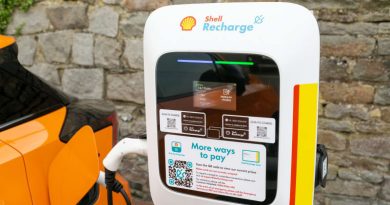Column: Why the Pentagon cares about EV battery materials
The latest moves to clarify whose electric vehicles will get a federal tax credit are also revealing something the auto industry probably doesn’t think much about: The larger aim of last year’s Inflation Reduction Act is really to bolster American national security.
In that context, the Biden administration’s fast passage of a U.S.-Japan trade agreement on EV battery materials at the end of March makes a bit more sense —despite the industry outcries it sparked — as will any similar deal that’s sure to be inked with Europe. And so does the U.S. Treasury Department’s ruling on which countries automakers can source materials from to qualify for a federal EV tax break.
No doubt about it, the Inflation Reduction Act is concerned with how to usher in the nation’s historic transition from internal combustion vehicles to battery-electric ones, and it’s clearly intended to promote North American manufacturing and mining by providing tax incentives for U.S. vehicle assembly and content sourcing.
But the larger effort isn’t solely about helping Ford, helping Chevrolet, helping Tesla, helping Hyundai.
It’s occurring in step with the U.S. Department of Defense’s own mission to shore up critical supplies of all the things that make jet fighters soar, tanks rumble and missiles fly.
The missions are occurring as one. The things the Pentagon needs for its future operating capability are more or less the same things the EV industry now needs. Things like cerium, gallium, ytterbium, lanthanum, zirconium and praseodymium.
These terms from a college geology textbook are things that anyone in the car business would be hard-pressed to refer to as “auto parts.” But they are.
Praseodymium is needed as an alloy with magnesium to create high-strength metals used in aircraft engines. It is also used to develop lightweight magnets for the motors that raise and lower car windows and to make windshield wipers go back and forth.
Gallium, which now comes almost entirely from China, is envisioned as a component of a breakthrough technology as gallium nitride semiconductors to help EVs charge faster. It’s also needed for permanent magnets that guide missiles.
The Pentagon is acutely aware that most of the hard-to-find items on its shopping list are not being produced in the United States. In some cases, China is the primary source for them. And depending on who’s doing the estimating, Russia ranks either second or fourth in the world’s supply of rare earth minerals.
As the Department of Defense said in discussing its list of minerals that the United States is in a jam on, the nation must develop new sources for them. The word it uses is “allies.” The United States, it said, must work with allies and “partner nations” to develop new supply chains.
It’s fair to assume that nobody at Ford, Stellantis or General Motors immediately thinks of Japan as their “partner.” Yokohama-based Nissan has bedeviled Stellantis’ legacy American brands for decades. Toyota and Honda have scratched away at Chevrolet for the past half-century. Ford largely surrendered its pursuit of the car segment in the face of Japanese-brand success.
So, these American automakers think, why let their Japanese or European competitors enjoy the benefits of U.S. EV tax credits through the critical minerals back door.
It’s because the Japanese are not just competitors — they are allies. What’s good for the auto business is also good for military strength.
And the effort to source these items, reasons the Department of Defense, “must be a whole of government approach to ensure the U.S. has access to strategic and critical materials, to ensure our national economic well-being and our national defense.”
Source : Autonews.com




